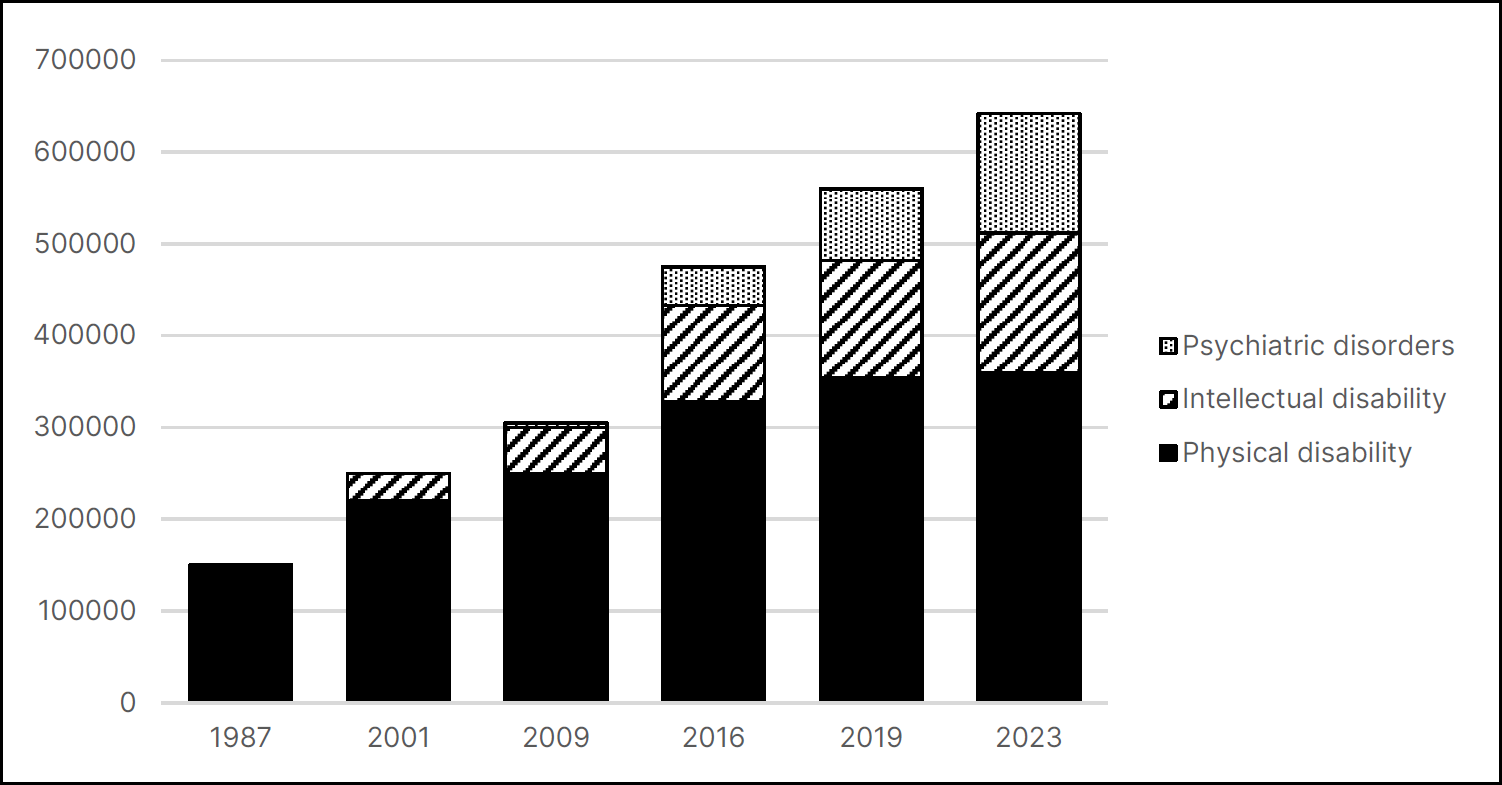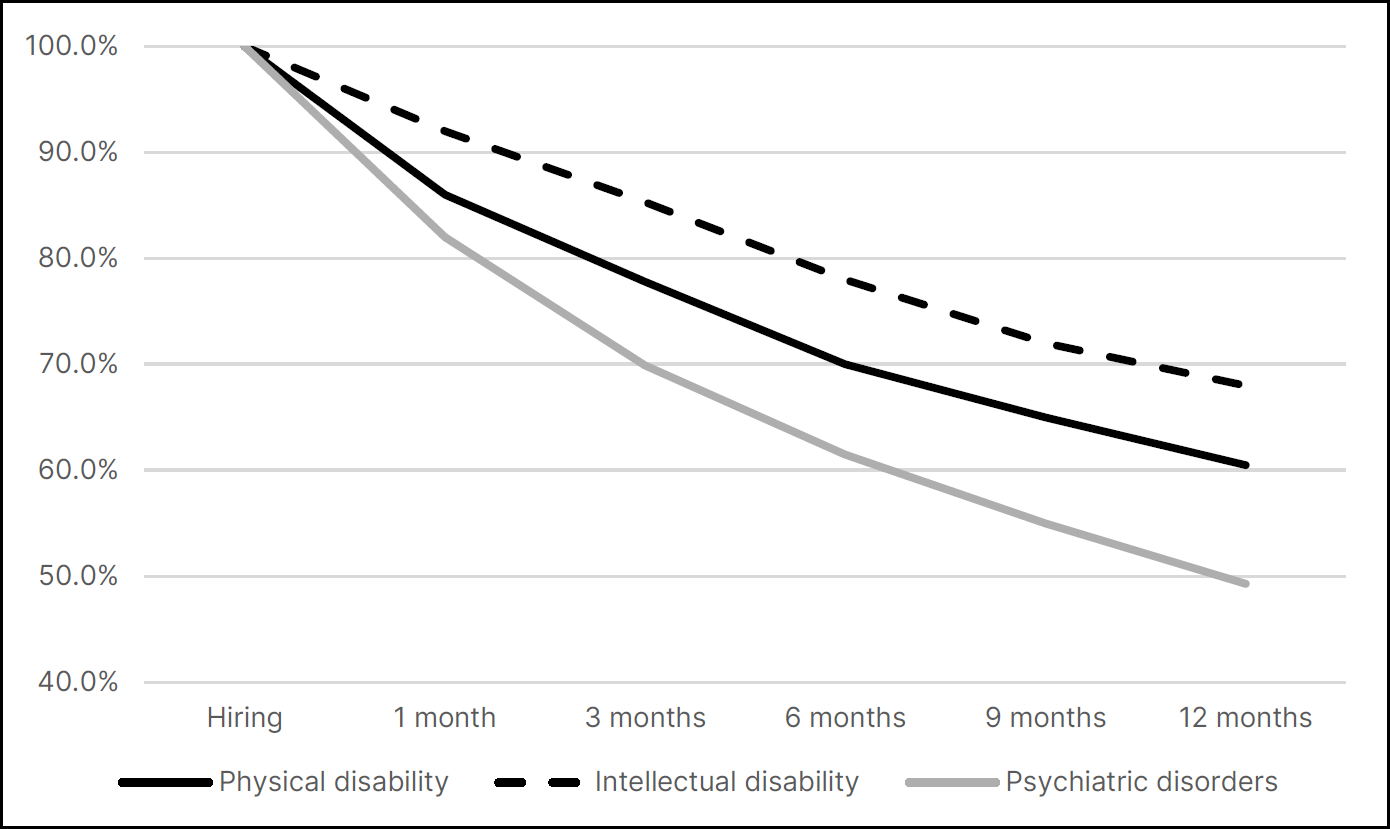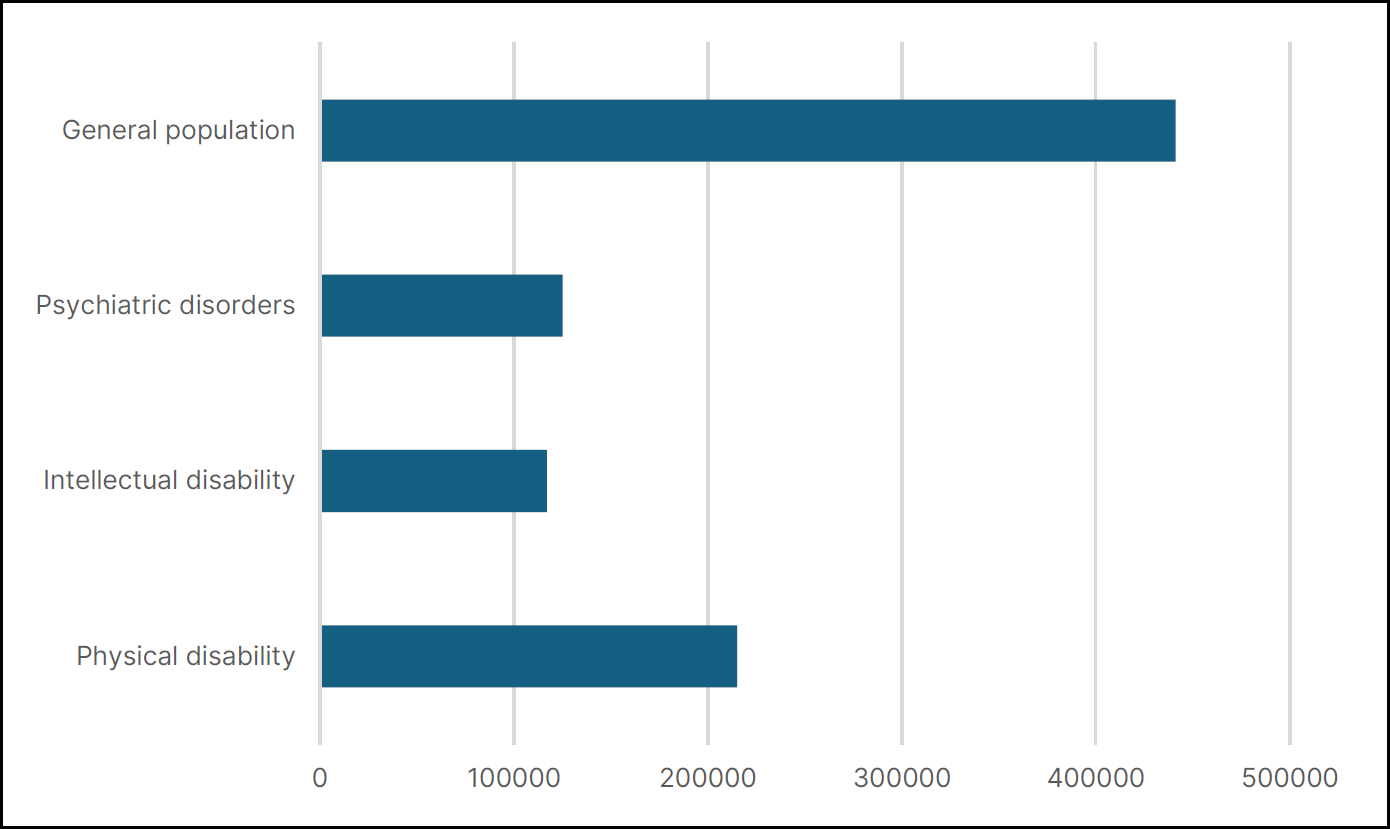
Disability & Employment in Japan
Save PDFLesson Plan: Disability & Employment in Japan
Created by: Anne-Lise Mithout, Université Paris Cité
Creation Date: February 17, 2024
Keywords: Work, Accommodation, Career, Corporate World
Disability & Employment in Japan
Target Audience:
Undergraduate students, Graduate students
Duration:
1 or 2 class sessions
Learning Objectives:
This lesson aims to explore the situation of people with disabilities on the Japanese labor market. It encourages students to discuss barriers faced by disabled workers at different steps of their professional careers.
It provides documents including statistical data and can serve as a base for a methodological discussion on the use of public statistics and quantitative data for sociological research.
It is also aimed to foster discussion on the lived experiences of disabled workers in Japanese companies, in terms of material working conditions and human relations, in order to highlight the different aspects of “reasonable accommodation”, a keyword of contemporary disability policies.
Potential Courses to Include this Lesson in:
Japanese, Asian or global disability studies
Any course focusing on work in Japan or Asia
Any course that focuses explicitly on disability
Japanese, Asian, or global business or economics courses
Required Materials:
Data Tables (see below)
Potential Readings:
On employment and disability in Japan :
HASEGAWA, Tamako. Equality of opportunity or employment quotas?—A comparison of Japanese and American employment policies for the disabled. Social science Japan journal, 2007, vol. 10, no 1, p. 41-57.
This paper is a bit old but summarizes the debate revolving around employment quota.
MITHOUT, Anne-Lise. From equal access to employment to equal career opportunities? Employment practices and work experiences of qualified disabled workers in Japan. Alter, 2021, vol. 15, no 4, p. 341-353.
NAGASE, Osamu. Diversity, inclusion, and disability in Japan: The usefulness of reasonable accommodation. In : ALCANTARA, Lailani, SHINOHARA, Yoshiki (eds.), Diversity and Inclusion in Japan. Routledge, 2022. p. 100-116.
On diversity in the Japanese corporate world :
ALCANTARA, Lailani, SHINOHARA, Yoshiki (eds.), Diversity and Inclusion in Japan. Routledge, 2022
On disability and employment in a non-Japanese context:
ALTER - European journal of disability research, Vol. 15(4), Special issue “Employment and Disability: The experience of persons with disabilities”, edited by Marie-Renée Guével and Angela Wegscheider. 2021.
Discussion Questions:
What do you think are the main barriers faced by disabled people in the field of employment ? Do you think the situation is different between people living with different catégories of impairments ?
Reforms aimed to promote disabled people’s employment have taken place over the last decade. What kind of data do we need to assess whether this reform was a success? How can we gather such data?
Based on table 1, would you say that disabled people’s access to employment has improved since 1987 ? What kind of complementary data would be necessary to prove this point more accurately ?
How is it possible to reduce discrimination at the time of hiring ? What do you think are the benefits and limits of the quota system ? Do you think that the current labor shortage in Japan is a factor fostering the hiring of disabled workers ?
How can companies put the principle of “reasonable accommodation” into practice? Who can decide the content of accommodation and how ? How can the principle of reasonable accommodation be applied to human relations inside the company ? Do you think accommodation mechanisms created for disabled workers can benefit other workers as well ?
Based on figure 2, what do you think of the retention of disabled workers in Japanese companies ? What do you think are the causes of this phenomenon ? How can retention be improved ?
Based on figure 3: what do you think are the causes of the income gap among disabled workers and between disabled workers and the general population ?
Relevant Vocabulary:
Here is a great general guide for best practices in disability-related language by the Center for Disability Rights.
Background Information for Instructors:
More data and information about support systems can be found on the MHLW website (Japanese only).
This lesson only deals with employment in the mainstream. Information about the sheltered employment system can be found on the MHLW website (Japanese only). Information about the "special subsidiary" (tokurei kogaisha) system can be found on the MHLW website (Japanese only).
Data Tables:
 Table 1: Evolution of the headcount of disabled workers in Japanese companies (Unit : number of individuals). Based on MHLW data.
Table 1: Evolution of the headcount of disabled workers in Japanese companies (Unit : number of individuals). Based on MHLW data.
 Table 2: Retention rate of disabled workers (2017) Source: JEED, 障害者の就業状況等に関する調査研究, 2017.
Table 2: Retention rate of disabled workers (2017) Source: JEED, 障害者の就業状況等に関する調査研究, 2017.
 Table 3. Medium monthly income (yens) (2018) Source : MHLW, 平成 30 年度障害者雇用実態調査結果, 2018.
Table 3. Medium monthly income (yens) (2018) Source : MHLW, 平成 30 年度障害者雇用実態調査結果, 2018.